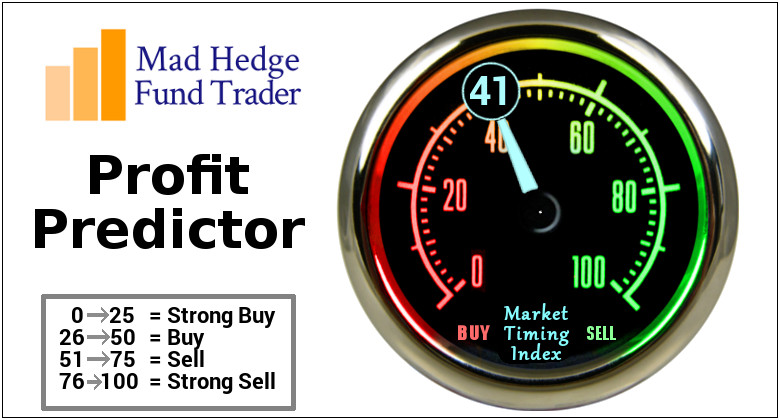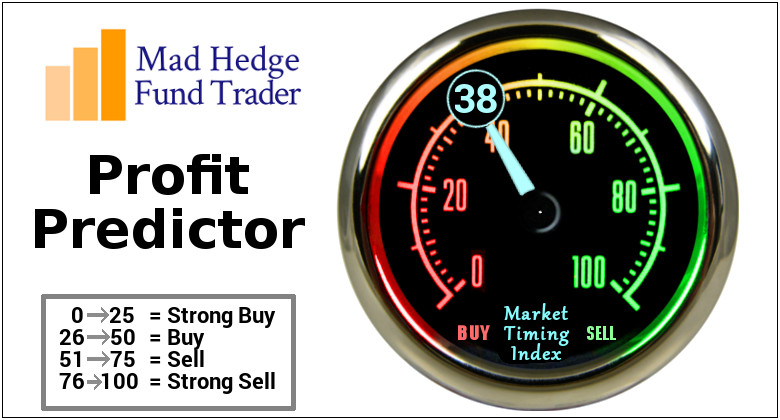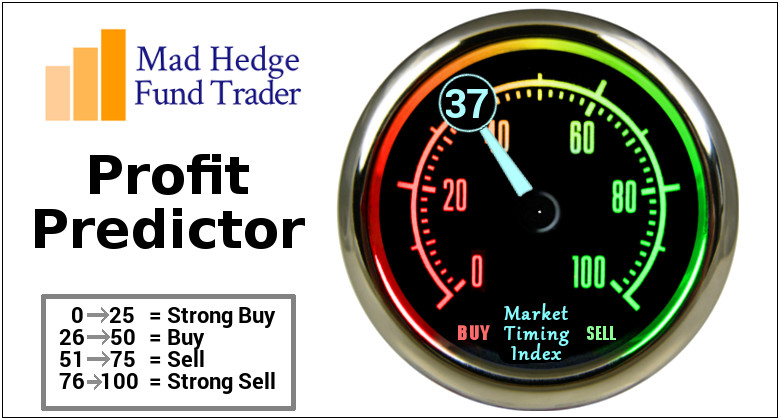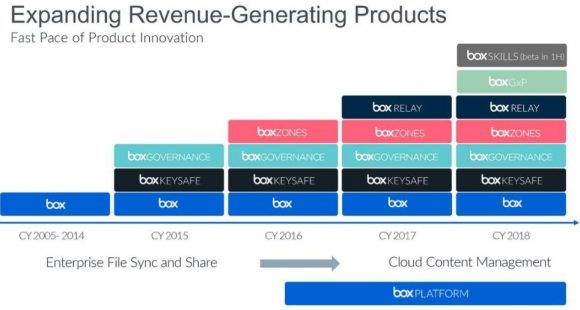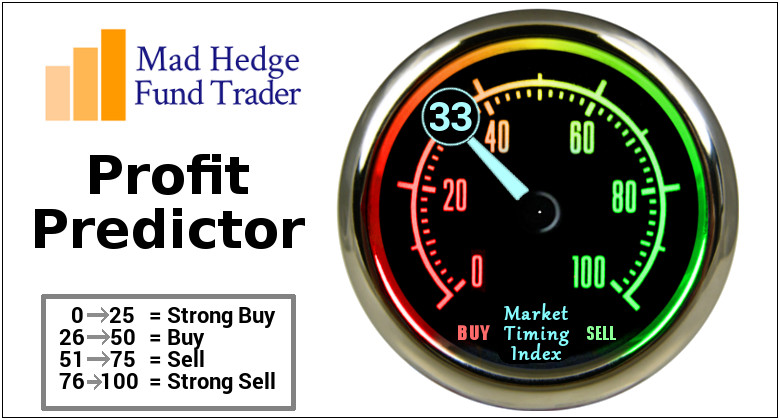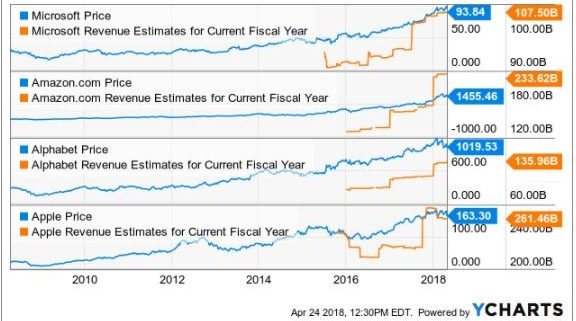Global Market Comments
May 11, 2018
Fiat Lux
Featured Trade:
(WEDNESDAY, JUNE 13, 2018, PHILADELPHIA, PA, GLOBAL STRATEGY LUNCHEON),
(MAY 9 BIWEEKLY STRATEGY WEBINAR Q&A),
(FB), (MU), (NVDA), (AMZN), (GOOGL),
(TLT), (SPX), (MSFT), (DAL),
(MAD HEDGE DINNER WITH BEN BERNANKE)
Tag Archive for: (MSFT)
Below please find subscribers' Q&A for the Mad Hedge Fund Trader May 9 Global Strategy Webinar with my guest co-host Bill Davis of the Mad Day Trader.
As usual, every asset class long and short was covered. You are certainly an inquisitive lot, and keep those questions coming!
Q: Would you still short Facebook (FB)?
A: Right now, no. I thought the dynamics changed off the last earnings report, so the answer is no. We have made a ton of money trading Facebook this year, and all of it has been from the long side.
Q: How will the election affect the market?
A: It will go down into the election, but you'll then get a strong rally as the uncertainty fades away. It really makes no difference who wins. It is the elimination of uncertainty that is the big issue.
Q: Do you have a price to buy Micron Technology (MU) or NVIDIA (NVDA), or do you want to wait for a crash day?
A: I want to wait for a crash day, because even though these are great companies, on the down days, they fall twice as fast as any other stock. Your entry point is very important in that situation.
Q: Do you see opportunities to sell short the U.S. Treasury bond market (TLT) again?
A: Yes. But wait for the four-point rally not the two-point rally.
Q: Rising interest rates should benefit banks - why are they such horrible performers?
A: The double in bank stocks in 2017 fully discounted this year's interest rate move. For banks to really perform interest rates have to move higher still, which they will eventually.
Q: When will the yield curve invert and what will be the implications?
A: You can take the Fed's current rate of interest rate rises (which is 25 basis points every three months) and essentially calculate that the yield curve inverts at the end of 2018 or the beginning of 2019. Recessions and bear markets always follow six months after that inversion takes place. That's when interest rates start to rise very sharply as bond investors panic and unwind all their leveraged long positions.
Q: Why are you not involved with Amazon (AMZN) and Google (GOOGL)?
A: I've already taken big profits in both of these and I'm just waiting for another serious dip before I get back in again.
Q: What happens to stock buybacks?
A: While other investors are pulling out of the market, stock buybacks are doubling. But, that is only happening, essentially, in the tech stocks - they're the buyback kings. If you don't have a serious buyback program this year, your stock is falling. Companies are the sole net buyers of the market this year, and they are only buying their own stocks.
Q: What do you see the upper and lower end of the S&P 500 (SPY) range to November?
A: I think we've already got it: 2,550 on the low side, 2,800 on the high side - that a 10% range and you can expect it to get narrower and narrower going into November. After that, we get an upside breakout to new all-time highs.
Q: When will rates be negative next?
A: In the next recession, the bottom of which will be in 2 to 2.5 years; that's when interest rates in the U.S. could go negative, as they did in Japan and Europe for several years.
Q: What is your No. 1 pick in the market today?
A: We love Microsoft (MSFT) long term. However, right now the background macro picture is more important than stock selection than any single name, so we're keeping a position in Microsoft in the Mad Hedge Technology Letter, but not in Global Trading Dispatch. We're sort of hanging back, waiting for another sell-off before we touch anything on the long side in GTD. Remember, the money is made on a buy in the new position, not on the sell going out.
Q: Was the semiconductor chip sell-off overdone?
A: Absolutely - the negative report was put out by a new analyst to the industry who doesn't know what he's talking about. If you ask all the end users of the chips, all they talk about is A.I., and that means exponential growth of chip demand.
Q: Is it a good time to buy airline stocks (DAL)?
A: No, until we get a definitive peak in oil, and a speed up again in the economy, you don't want to touch economically sensitive sectors like the airlines.
Mad Hedge Technology Letter
May 9, 2018
Fiat Lux
Featured Trade:
(HERE'S THE TOP STOCK IN THE MARKET TO BUY TODAY),
(MSFT), (AMZN), (AAPL), (APTV), (QCOM), (FB)
When the CEO of Microsoft, Satya Nadella, sits down for a candid interview, I move mountains then cross heaven and hell to listen to him, and you should, too.
Microsoft is at the top of my list as a conviction buy.
Nadella is one of the great CEOs of our time and was able to complete Microsoft's makeover after Steve Ballmer's insipid tenure at the helm.
Microsoft's Build conference is the perfect platform for Nadella to share his wisdom about the company, industry, and changes going forward.
In an age where tech CEOs thrive off of smoke and mirrors, Nadella was succinct conveying the concept of trust as the secret sauce that will help tech's digital footprint expand into new territories.
Trust infused products through the cloud and A.I. will be the perfect archetype of future tech that will encourage accelerated adoption rates.
A.I. was the message of the day at the Build conference. Nadella used the term A.I. 14 times and the word cloud four times when interviewed.
It was fitting that Microsoft wowed the audience with a sparkly, new-fangled demo.
The demo put on by Microsoft in conjunction with Amazon's (AMZN) Alexa showed smart-assistants working in collaboration.
Microsoft showed how it is possible to use a PC Windows desktop to order an Uber car through Amazon's Alexa.
This technology is very powerful and is a work-around for the "walled garden" problem where big companies are closing off their systems only to proprietary software and products limiting upside potential.
The ability to collaborate with multiple A.I. smart systems will generate a whole new layer of business catering toward the communication and business developments among A.I. systems.
Nadella also offered extended examples of A.I. applications, for instance, the capability of detecting cracks in an oil pipeline and running recognition software through a drone using a Qualcomm (QCOM) manufactured camera to monitor the state of containers.
Trusting A.I. will expedite the usage of A.I. business applications, and the companies diverting capital into A.I. enhancement will reap from what they sow.
The knock-on effect is that university A.I. staff members are being poached faster than a breakfast egg. There is a bidding war going on as we speak from both sides of the Pacific.
Facebook is opening new A.I. research centers in Seattle and Pittsburgh.
Previously, A.I. was a buzzword and companies would trot out a visually stimulating display with pizzazz. But that is all changing with A.I. swiftly moving into the backbone of all business operations.
Ottomatika, a company that develops software for autonomous cars acquired by Aptiv (APTV), was entirely a Carnegie Mellon University (CMU) in-house project that was picked up by Aptiv for commercial applications.
In one fell swoop, (CMU) lost a whole team of leading A.I. researchers.
Microsoft is a premium stock because it straddles both sides of the fence.
On one side, it's an uber growth company with Microsoft Azure growing 93% YOY satisfying investors requirement for insatiable growth.
On the other hand, Microsoft is robustly lucrative profiting $21.20 billion in 2017, and would be a Warren Buffett-type of cash flow reliant stock even though he has smothered any inkling of buying Microsoft shares because of his close relationship with co-founder Bill Gates.
Even Microsoft's legacy product Microsoft Office 365 is a gangbuster segment swelling 42% YOY.
This contrasts with other legacy companies that are attempting to wean themselves from their own outdated products.
Office 365 products are still embedded in daily life, and I am using it now to type this story.
On the technical side of it, Microsoft is beefing up its developer tools.
Microsoft will integrate Kubernetes, an open-source system for automating deployment, into the Azure as well as upping its Azure Bot Service adding 100 new features.
There are more than 300,000 developers who operate the Azure Bot Service alone.
The slew of upgrades for developers will enhance the power of Microsoft's software and ecosystem.
The overarching theme to the Build conference is the integration of A.I. into real life business applications and the importance of the cloud.
Now the Cloud.
Nadella reaffirmed Microsoft's position in the cloud wars characterizing the current environment as a duo of Amazon and Microsoft with Google trailing behind.
Microsoft has the potential to nick Amazon's position as the industry's cloud leader because of the unique set of products it can combine with the cloud.
Most of the world utilizes a mix of PC-based hardware, using Microsoft's software and operating system, supplemented by an Android-based smartphone.
As expected, Microsoft, Alphabet (GOOGL), and Amazon are spending a pretty penny advancing their cloud business.
Microsoft spends more than $1 billion per month on Azure cloud data centers.
This number now surpasses the entire annual Microsoft R&D budget.
In the interview, Nadella cited that Microsoft now has 50 domestic data centers.
Amazon habitually holds between 50,000 to 80,000 servers at each data center. Extrapolate the lower range of the number with 50 data centers and Microsoft could have at least 2.5 million servers working for its data needs.
The barriers of entry have never been higher in the cloud industry because the costs are spiraling out of control.
Few people have billions upon billions to make this business work at the appropriate scale.
Tom Keane, head of Global Infrastructure at Microsoft Azure, recently said that Azure meets 58 compliance requirements set forth by the federal government, industry, and local players.
Azure is the first cloud that satisfies the Defense Federal Acquisition Regulation Supplement criteria for contractors to handle Department of Defense work.
Regulation has emerged as one of the controversial issues of 2018, and this did not get lost in the shuffle.
The trust comment was clearly a thinly veiled swipe against Facebook's (FB) much frowned upon business model, making it commonplace these days for prominent CEOs to distance themselves from Mark Zuckerberg's creation.
Protecting a company's image and reputation is paramount in the new rigid era of big data.
Nadella's anti-Facebook rhetoric continued by noting the auction-based pricing standards are "funky," explaining the model is counterintuitive. His reason was that as demand increases, the price should drop and not rise.
Apple (AAPL) CEO Tim Cook has largely been negative about Facebook's tactics. The fury is justified when you consider Apple and Microsoft hustle industriously to develop software and hardware products while Facebook manipulates user data to profit from collected data. A nice shortcut if there ever was one.
It's clear that Apple and Microsoft have no interest in giving third parties access to personal data because the leadership understands it is a slippery slope to go down and unsustainable.
Nadella's emphasis on tech ethics is a breath of fresh air and the data Microsoft accumulates is used to improve the cloud and software products rather than pedal to mercenaries.
The companies that have staying power create proprietary products that cannot be replicated.
Microsoft's assortment of software products acts as the perfect gateway into the cloud and is a moat widening tool.
A.I. and the cloud are all you need to know, and Microsoft is at the heart of this revolutionary movement.
Any weakness of Microsoft's shares into the low-90s is a screaming buy.
_________________________________________________________________________________________________
Quote of the Day
"Innovation has nothing to do with how many R&D dollars you have. When Apple came up with the Mac, IBM was spending at least 100 times more on R&D. It's not about money. It's about the people you have, how you're led, and how much you get it." - said Apple cofounder Steve Jobs.
Global Market Comments
May 4, 2018
Fiat Lux
Featured Trade:
(DON'T MISS THE MAY 9 GLOBAL STRATEGY WEBINAR),
(A DAY IN THE LIFE OF THE MAD HEDGE FUND TRADER),
(SPY), (TLT), (TBT), (FXE),(GLD), (GDX), (USO),
(AMLP), (STBX), (NFLX), (DIS), (AAPL), (GM)
Global Market Comments
May 3, 2018
Fiat Lux
Featured Trade:
(STORAGE WARS),
(MSFT), (IBM), (CSCO), (SWCH),
(DON'T BE SHORT CHINA HERE),
($SSEC), (FXI), (CYB), (CHL), (BIDU),
Mad Hedge Technology Letter
April 26, 2018
Fiat Lux
Featured Trade:
(THE SMALL AI PLAY YOU'VE NEVER HEARD OF),
(BOX), (GOOGL), (MSFT), (AMZN), (IBM)
The cloud segment of technology is hotter than hot, and as this sector starts to trade at a big premium, investors will have to look further down the chain of command to find a reasonable deal.
An up-and-coming cloud service Box (BOX) has gone undiscovered and is in position to seize a larger share of the cloud market moving forward.
The firm is led by CEO Aaron Levie who dropped out of my old alma mater USC in 2005 to start a cloud company with acting CFO and childhood friend Dylan Smith.
Last quarter was record-setting for Box, and it had a number of significant six- and seven-digit deals. Keep in mind Box's revenues are paltry compared to the behemoths that run this industry.
The platform has seen gradual success from all corners of the business world with various businesses from insurance claims processors to wealth advisors who use Box as a back-end platform.
Health care is another industry deploying the Box platform to aid and develop cloud services for patients.
In a general sense, the beauty of the cloud is the propensity to adapt to any company that is willing to go digital.
Even though many legacy companies are not natively digital, the cloud can twist and contort to fit the customers' needs.
Levie raised some compelling arguments for the continued tech momentum stating that imminent regulation in Europe through General Data Protection Regulation (GDPR) will act as a "broader tailwind in compliance and security efforts."
Box also announced a "readiness (GDPR) package" revealing that tech companies have been planning for the regulation overhaul up to 18 months in advance.
Even though mass media sensationalism would lead investors to believe the threat of regulation is about to blindside this whole sector, the unrest has been bubbling up for quite some time allowing tech companies ample time to get their houses in order.
Box actually sees the genesis of GDPR as a critical part of the cloud adoption process.
As dinosaur systems become outdated, a sense of safety reinforced by strong cybersecurity protection, strong privacy rules, and content compliance will nudge companies to head for the cloud like a drunk sailor to a pub.
Legacy platforms are the most susceptible to cyber-criminals and rogue hackers.
The analog defense is no match for sophisticated cyber-espionage, and GDPR will be another "driving force" behind the macro-migration shift to the cloud, just based on the security aspect alone.
Another pearl of wisdom offered by Box is that the bulk of clients requiring cloud products are integrating Microsoft Office 365.
This software acts as a lynchpin to any cloud service.
I must confess that I am writing this story on Microsoft Office 365 now, and most businesses cannot function without the dizzying array of Excel, PowerPoint, and Word.
Box has a strong relationship with Microsoft and has incisive insight into the synergies the cloud industry spins off.
The integration of Office 365 has complemented the Azure cloud with tighter cohesiveness.
The school of thought is the collective cloud industry is a $50 billion per year market and growing, offering smaller firms healthy growth levers to advance at the same time that the Microsofts (MSFT) and Amazons (AMZN) overperform.
At the Sohn Investment Conference in New York, Chamath Palihapitiya, a venture capitalist and former Facebook executive, extolled Box as a great way to play Artificial Intelligence (AI).
The shares spiked almost 13% upon his adulation.
A recent completed survey showed 66% of business leaders feel the pace of digitization must pick up in their own offices.
The speed of innovation is something that keeps most CEOs up at night. Wake up tomorrow and it is possible their core products could be outdated or disrupted by a new Amazon threat.
That is the world we live in now.
Only 42% of CIOs admitted they have a digital strategy. And of those digital strategies, they are mostly digital second or third, not digital first, blueprints.
In the same PricewaterhouseCoopers (PwC) survey, companies conceded that only 40% of IT teams are able to pursue the newest innovations with adopting specific operational needs in mind.
The micro-environment harbors the same bullishness as the macro-factors.
Box is hitting all the right notes.
Revenue is advancing at a 24% per year clip, and annual revenue surpassed the half a billion mark.
Box has indicated it expects to cross the $1 billion annual revenue threshold sometime in mid- to late 2021, giving the company more than three years to double revenue.
Recent reports support Box's growth trajectory.
About 60% of revenue derives from firms that employ more than 2,000 workers, highlighting Box's propensity to emphasize enterprise cloud development instead of small individual users.
Working with larger companies gives Box the opportunity to cross-sell more powerful add-ons, delivering a net expansion rate of 14%.
Migrating to a new cloud platform is incredibly sticky boosting retention rates. Box's churn rate is flourishing with a best of breed 4% per year. The key to expediting cloud success is quickening its pace of new product rollout.
Box attempts to give exactly what customers need with a spate of new concoctions.
Box GxP is a new product calibrated around life science companies. The Box GxP compliance is up to date with FDA regulations. And, Box has the ability to retire legacy ECM (Enterprise Content Management) systems.
This new service has experienced solid traction around the world as we head toward a world where legacy software becomes obsolete.
The second new offering is Box Skills, still in beta mode, which is a part of Box's artificial intelligence strategy.
Box is platform neutral allowing in-house architecture to support partnerships with Google, Microsoft, Amazon, and IBM to nail down third-party cloud tools that Box customers need.
Box Skills is a framework that brings the best machine learning innovation to content securely stored in Box.
This is managed through artificial intelligence, which automatically contextualizes images through detection protocols. Text recognition is automated for the benefit of the user, too.
Audio intelligence renders text transcripts and detects topics that can be searched in Box to locate an audio file by words or topic.
Video intelligence offers transcription, topic detection, and facial recognition allowing users to jump around video files in a non-linear fashion.
Palihapitiya effectively gave Box a free commercial to the tech investing world. His bull thesis for Box squarely centers around its AI innovations, specifically Box Skills.
The last new service to market is Box Transform, which is the advanced consulting arm of Box.
The goal of Transform is to arrange a concierge-like Box advisor that can help companies accelerate digital transformation throughout an organization while unlocking efficiencies and productivity for employees.
This service originated from Box's consulting advanced professional services team and will give Box another growth lever. Companies such as Red Hat and Intel have made the consultant- and support-side of the business a robust part of their organizations.
Impeding growth is the cutthroat competition in this space with Amazon, Microsoft, and Google (GOOGL).
However, margins remain strong at 75.5% last quarter, and Box expects margins to slightly dip around 74% this year.
Box has found a warm welcome for its newer products, deriving almost 70% of its new deals from fresh cloud offerings.
Partners are also a big source of new deals comprising more than half the deals over $100,000.
Specifically, IBM (IBM) made up a swath of its larger deals. In a sense, competitors are not really competitors.
They are frenemies. They compete against each other yet innovate and do deals together.
The core growth is supplemented by existing customers that are the best source of extra marginal revenue.
In short, once firms are firmly lodged on a platform, they buy everything on that platform.
Enter a supermarket, and odds are if goods are purchased, the receipt will be from the entered supermarket.
Box is entirely leveraged toward mid-sized and large enterprise business. That is where it makes its money.
The emphasis on large players boosts the ACV (Average Contract Value), which is regarded as a sacrosanct metric for Box.
The amount of data created in 2017 was more data created in the past 5,000 years. In the next five years, data volume with grow by 800%.
Box has continually positioned itself as the firm that can extract a staggering amount of unrealized value locked away in the nooks and crannies of legacy models.
Box is a great long-term hold as these diminutive cloud assets become more valuable by the day.
_________________________________________________________________________________________________
Quote of the Day
"Television won't be able to hold onto any market it captures after the first six months. People will soon get tired of staring at a plywood box every night." - said Darryl F. Zanuck, co-founder of Twentieth Century-Fox Film Corp.
Mad Hedge Technology Letter
April 25, 2018
Fiat Lux
Featured Trade:
(FANGS DELIVER ON EARNINGS, BUT FAIL ON PRICE ACTION),
(GOOGL), (AMZN), (MSFT), (AAPL), (FB),
(DBX), (NFLX), (BOX), (WDC)
Alphabet (GOOGL) did a great job alleviating fears that large-cap tech would be dragged through the mud and fading earnings would dishearten investors.
The major takeaways from the recent deluge of tech earnings are large-cap tech is getting better at what they do best, and the biggest are getting decisively bigger.
Of the 26% rise to $31.1 billion in Alphabet's quarterly revenue, more than $26 billion was concentrated around its mammoth digital ad revenue business.
Alphabet, even though rebranded to express a diverse portfolio of assets, is still very much reliant on its ad revenue to carry the load made possible by Google search.
Its "other bets" category failed to impact the bottom line with loss-making speculative projects such as Nest Labs in charge of mounting a battle against Amazon's (AMZN) Alexa.
The quandary in this battle is the margins Alphabet will surrender to seize a portion of the future smart home market.
What we are seeing is a case of strength fueling further strength.
Alphabet did a lot to smooth over fears that government regulation would put a dent in its business model, asserting that it has been preparing for the new EU privacy rules for "18 months" and its search ad business will not be materially affected by these new standards.
CFO Ruth Porat emphasized the shift to mobile, as mobile growth is leading the charge due to Internet users' migration to mobile platforms.
Google search remains an unrivaled product that transcends culture, language, and society at optimal levels.
Sure, there are other online search engines out there, but the accuracy of results pale in comparison to the preeminent first-class operation at Google search.
Alphabet does not divulge revenue details about its cloud unit. However, the cloud unit is dropped into the "other revenues" category, which also includes hardware sales and posted close to $4.4 billion, up 36% YOY.
Although the cloud segment will never dwarf its premier digital ad segment, if Alphabet can ameliorate its cloud engine into a $10 billion per quarter segment, investors would dance in the streets with delight.
Another problem with the FANGs is that they are one-trick ponies. And if those ponies ever got locked up in the barn, it would spell imminent disaster.
Apple (AAPL) is trying its best to diversify away from the iconic product with which consumers identify.
The iPhone company is ramping up its services and subscription business to combat waning iPhone demand.
Alphabet is charging hard into the autonomous ride-sharing business seizing a leadership position.
Netflix (NFLX) is doubling down on what it already does great - create top-level original content.
This was after it shed its DVD business in the early stages after CEO Reed Hastings identified its imminent implosion.
Tech companies habitually display flexibility and nimbleness of which big corporations dream.
One of the few negatives in an otherwise solid earnings report was the TAC (traffic acquisition costs) reported at $6.28 billion, which make up 24% of total revenue.
An escalation of TAC as a percentage of revenue is certainly a risk factor for the digital ad business. But nibbling away at margins is not the end of the world, and the digital ad business will remain highly profitable moving forward.
TAC comprised 22% of revenue in Q1 2017, and the rise in costs reflects that mobile ads are priced at a premium.
Google noted that TAC will experience further pricing pressure because of the great leap toward mobile devices, but the pace of price increases will recede.
The increased cost of luring new eyeballs will not diminish FANGs' earnings report buttressed by secular trends that pervade Silicon Valley's platforms.
The year of the cloud has positive implications for Alphabet. It ranks No. 3 in the cloud industry behind Microsoft (MSFT) and Amazon.
Amazon and Microsoft announce earnings later this week. The robust cloud segments should easily reaffirm the bullish sentiment in tech stocks.
Amazon's earnings call could provide clarity on the bizarre backbiting emanating from the White House, even though Jeff Bezos rarely frequents the earnings call.
A thinly veiled or bold response would comfort investors because rumors of tech peaking would add immediate downside pressure to equities.
The wider-reaching short-term problem is the macro headwinds that could knock over tech's position on top of the equity pedestal and bring it back down to reality in a war of diplomatic rhetoric and international tariffs.
Google, Facebook, and Netflix are the least affected FANGs because they have been locked out of the Chinese market for years.
The Amazon Web Services (AWS) cloud arm of Amazon blew past cloud revenue estimates of 42% last quarter by registering a 45% jump in revenue.
Microsoft reiterated that immense cloud growth permeating through the industry, expanding 99% QOQ.
I expect repeat performances from the best cloud plays in the industry.
Any cloud firm growing under 20% is not even worth a look since the bull case for cloud revenue revolves around a minimum of 20% growth QOQ.
Amazon still boasts around 30% market share in the cloud space with Microsoft staking 15% but gaining each quarter.
AWS growth has been stunted for the past nine quarters as competition and cybersecurity costs related to patches erode margins.
Above all else, the one company that investors can pinpoint with margin problems is Amazon, which abandoned margin strength for market share years ago and that investors approved in droves.
AWS is the key driver of profits that allows Amazon to fund its e-commerce business.
Cloud adoption is still in the early stages.
Microsoft Azure and Google have a chance to catch up to AWS. There will be ample opportunity for these players to leverage existing infrastructure and expertise to rival AWS's strength.
As the recent IPO performance suggests, there is nothing hotter than this narrow sliver of tech, and this is all happening with numerous companies losing vast amounts of money such as Dropbox (DBX) and Box (BOX).
Microsoft has been inching toward gross profits of $8 billion per quarter and has been profitable for years.
And now it has a hyper-expanding cloud division to boot.
Any macro sell-off that pulls down Microsoft to around the $90 level or if Alphabet dips below $1,000, these would be great entry points into the core pillars of the equity market.
If tech goes, so will everything else.
If it plays its cards right, Microsoft Azure has the tools in place to overtake AWS.
Shorting cloud companies is a difficult proposition because the leg ups are legendary.
If traders are looking for any tech shorts to pile into, then focus on the legacy companies that lack a cloud growth driver.
Another cue would be a company that has not completed the resuscitation process yet, such as Western Digital (WDC) whose shares have traded sideways for the past year.
But for now, as the 10-year interest rate shoots past 3%, investors should bide their time as cheaper entry points will shortly appear.
_________________________________________________________________________________________________
Quote of the Day
"Technology is a word that describes something that doesn't work yet." - said British author Douglas Adams.
Legal Disclaimer
There is a very high degree of risk involved in trading. Past results are not indicative of future returns. MadHedgeFundTrader.com and all individuals affiliated with this site assume no responsibilities for your trading and investment results. The indicators, strategies, columns, articles and all other features are for educational purposes only and should not be construed as investment advice. Information for futures trading observations are obtained from sources believed to be reliable, but we do not warrant its completeness or accuracy, or warrant any results from the use of the information. Your use of the trading observations is entirely at your own risk and it is your sole responsibility to evaluate the accuracy, completeness and usefulness of the information. You must assess the risk of any trade with your broker and make your own independent decisions regarding any securities mentioned herein. Affiliates of MadHedgeFundTrader.com may have a position or effect transactions in the securities described herein (or options thereon) and/or otherwise employ trading strategies that may be consistent or inconsistent with the provided strategies.




